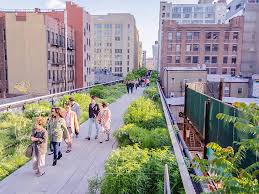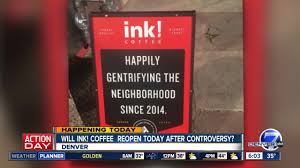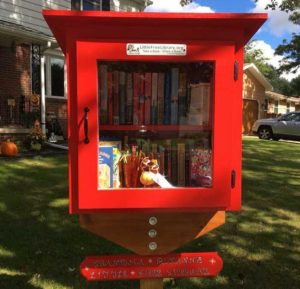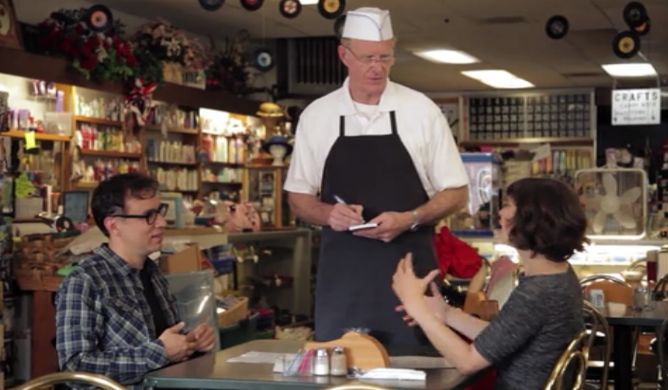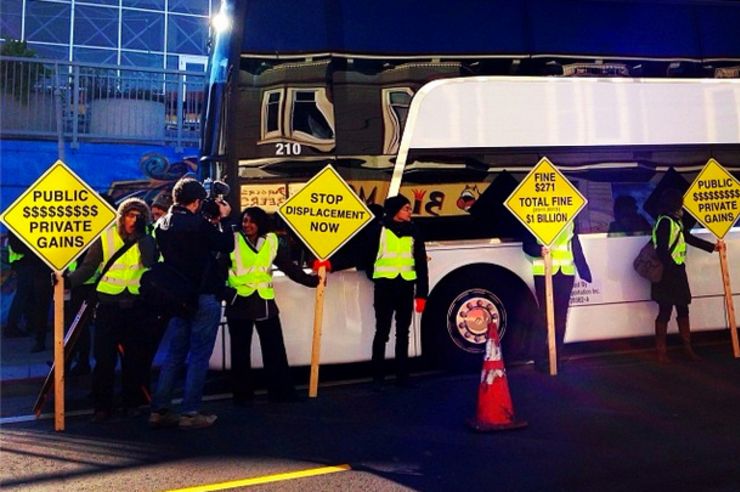Gentrification: Here’s your all-purpose list, from artists to zoning, of who and what’s to blame
We first published this list in 2019, but the search for scapegoats has expanded, and now includes little libraries and microbreweries.
When bad things happen, we look around for someone to blame. And when it comes to gentrification, which is loosely defined as somebody not like you moving into your neighborhood, there’s no shortage of things to blame. We’ve compiled a long–but far from exhaustive–list of the things that people have blamed for causing gentrification. (This task has been made easier by the seemingly inexhaustible editorial/journalistic appetite for stories pitched as exploring the gentrification of “X”, although an essay at Jacobin branding graphic novels as the “gentrification of comic books” seems to represent the moment that this meme has jumped its shark.)
It may be cathartic to point the finger of blame at someone or something else, but as this list shows, the blame game sheds precious little light on what’s really causing gentrification, and none at all on what we might do to minimize its negative effects. Any discernible symptom of change in a neighborhood is likely to change the way it is perceived by residents and others.
Cities, and their constituent neighborhoods are in effect living social structures–they’re always in a state of change. Sometimes the change is imperceptibly slow, and other times, when new buildings are built, it can be rapid and noticeable. But no neighborhood remains the same. Even places with no new construction see a constant inflow and outflow of residents, driven mostly by the natural course of people’s lives. It’s an illusion to suggest that any neighborhood will remain unchanged, and especially so for low income neighborhoods. As we’ve shown at City Observatory, the three-quarters of urban high poverty neighborhoods that recorded no decline in poverty rates from 1970 to 2010 didn’t remain unchanged, they lost 40 percent of their population over those four decades–and concentrated poverty and all its ills increased and spread.
The challenge with that portion of urban change that people call gentrification is not to stop it, but to figure out ways to make sure it produces benefits, if not for everyone, than for a wide range of current and future neighborhood residents. To do that, we have to do more than complain about the symptoms of change, but instead look deeper to understand its causes, and fashion policies that will minimize its negative effects.
The real problem: A shortage of cities
The real underlying cause of gentrification, affordability challenges, and displacement is our shortage of cities. Now that we’ve rediscovered the long-established virtues of urban living, we don’t have enough great urban neighborhoods, or enough housing in the few great urban neighborhoods that we have, to accomodate all those who would like to live there. This shortage coupled with growing demand is running head on into land use planning systems that make it impossible to build more of the kind of neighborhoods more and more people value. The reason housing prices are rising in great (and improving) urban neighborhoods is that we have so few of them, there’s so much demand for them, and we’ve made it too hard to build more, and build more housing in the ones we have. If we’re looking to reduce displacement from neighborhoods that are becoming nicer, along a whole series of dimensions, the answer isn’t to block change, its to build more housing and more such neighborhoods, so that they’re not in short supply and everyone has a chance to live in one.
As you read through our alphabetic list of the things people blame for causing gentrification, spend a minute to think about what’s really behind urban change, and what we might do to build more inclusive, more equitable cities.
A – B – C
Artists. In this BushwickTED talk, Brooklyn artist Ethan Petit argues that art causes gentrification, based on his personal experience. Petit says that art and gentrification are two heads of the same hydra, a conclusion long litigated in academia.
Banks. Finance and speculation figure prominently in many accounts of what causes gentrification. Forbes’ recent recent article, “What do hipsters and banks have in common: Gentrification.” is an example of how the narrative that greedy developers buy up low-cost housing and raise the rents, with money provided by shadowy banks, has made it even to mainstream financial publications
Climate Change. Rising sea levels are plainly a threat to low-lying places like South Florida. Already, several studies are claiming that Miami is experiencing “climate gentrification,” as real estate developers buy property in higher elevation locations in the city, like Liberty City, which have traditionally been regarded as less desirable, precisely because of their distance from water.
D – E – F
Declining Crime Rates. One of the biggest and most persistent changes in US cities in the past twenty years has been a steady reduction in crime rates. When crime rates decline in a neighborhood, property values tend to rise, and research shows a correlation between declining crime and an increase in the number of higher income and better educated residents.
Environmental improvement. Poor neighborhoods often have worse pollution and less green space than other places in cities, but when these environmental problems are addressed, property values rise. This has led some scholars to argue that we shouldn’t make living conditions in these poor neighborhoods too nice, for fear of increasing rents. Instead, we’re told, we should settle for improvements that make the neighborhoods “just green enough.”
Florida, Richard. Florida’s 2002 book Rise of the Creative Class led cities around the country to pursue strategies of improving urban amenities to attract creative workers. To many that was a recipe for gentrification, a charge that Florida wrestled with in his most recent book, The New Urban Crisis. And last year, a Washington DC lawyer sued the city government for following Florida’s ideas, which he claimed led to gentrification and displacement. The suit alleges the city “catered to what urban theorist Richard Florida famously identified as the “creative class” and ignored the needs of poor and working-class families,” which “lead to widespread gentrification and displacement.”
G – H – I
Galleries. In Los Angeles, Boyle Heights neighborhood, newly opened art galleries have has been ground zero for a sustained battle between neighborhood activists and gallery owners, replete with graffiti, assaults and performance-art like demonstrations. (See also: artists.) Publicly vowing to “stop at nothing to fight gentrification and capitalism in its boring art-washing manifestations, the group has staged protests, called for boycotts and used social media in savvy and withering ways — for example, describing one gallery owner as bearing the “stench of entitlement and white privilege.”
The Highline. In 2009, a decrepit elevated industrial railroad on the city’s West side was saved from demolition and turned into a landscaped, mid-air linnear park. The city also upzoned the area, and development took-off. Metropolis magazine termed it the “Highline effect” and fretted that “our new parks are trojan horses for gentrification.”
Independent shops. A 1992 dissertation looked at change in Southeast Portland’s Hawthorne Boulevard (a street that then and now has almost no national chain businesses) and concluded an influx of independent stores and boutiques had triggered “commercial gentrification.”
Internet. A close look at Chattanooga’s plan to roll out a municipal broadband system uncovers an insidious plan to gentrify city neighborhoods, leading Fast Company to ask: “Municipal broadband: Urban savior or gentrification’s wrecking ball.”
J – K – L
Java. The opening of a new coffee shop is often taken as a harbinger of gentrification. Whether it’s Starbucks or an independent local shop, espresso is often equated with upscaling from coast to coast, from Los Angeles, to Washington, D.C.—and even in Berkeley, Calif., where the San Francisco Chronicle implied that a “fourth-wave” shop opening across the street from Chez Panisse (in a former Philz coffee space) might gentrify a neighborhood where the average household income is over $98,000 per year, and the average home is worth $1,127,100. (Sometimes, though, coffee shops bring it upon themselves: Denver’s Ink coffee shop, rightfully,was a subject of protests for a sign saying “Happily gentrifying the neighborhood since 2014.”)
Kids. Gentrifiers are usually stereotyped as single, young hipsters. But demographically, these people are in (or approaching) their prime child-bearing years, and many are staying in cities and raising their children. The New York Times wrote of a burgeoning number of “strollervilles” popping up in neighborhoods and apartment buildings that previously had few children. “
The El: Improved transit is often blamed for driving up rents and property values and bringing in gentrifiers. As developers race to erect fancy apartment buildings and condominiums that cater mainly to young professionals, longtime residents of neighborhoods adjacent to established or newly planned transit hubs. it is claimed, are increasingly finding themselves priced out of their own communities.
Little libraries. You wouldn’t think to look at these tiny-free-standing book houses as harbingers of displacement, yet according to some, the undermine the traditional public library, by enabling people to get (and share) free reading material without patronizing the public building. The assumption here is that there’s a fixed demand for reading, and that little libraries rob big ones of needed customers; this ignores the high likelihood that little libraries will help kindle a lifelong interest in reading, and democratize the spread of knowledge. There are over 90,000 little free libraries, so it looks like we’re pretty much doomed.
M – N – O – P
Moms riding cargo bikes. In June, the Atlantic published an article entitled: “‘Cargo-Bike Moms’ are gentrifying the Netherlands: In Rotterdam, the bakfiets utility bike has become a symbol—and a tool—of urban displacement.”
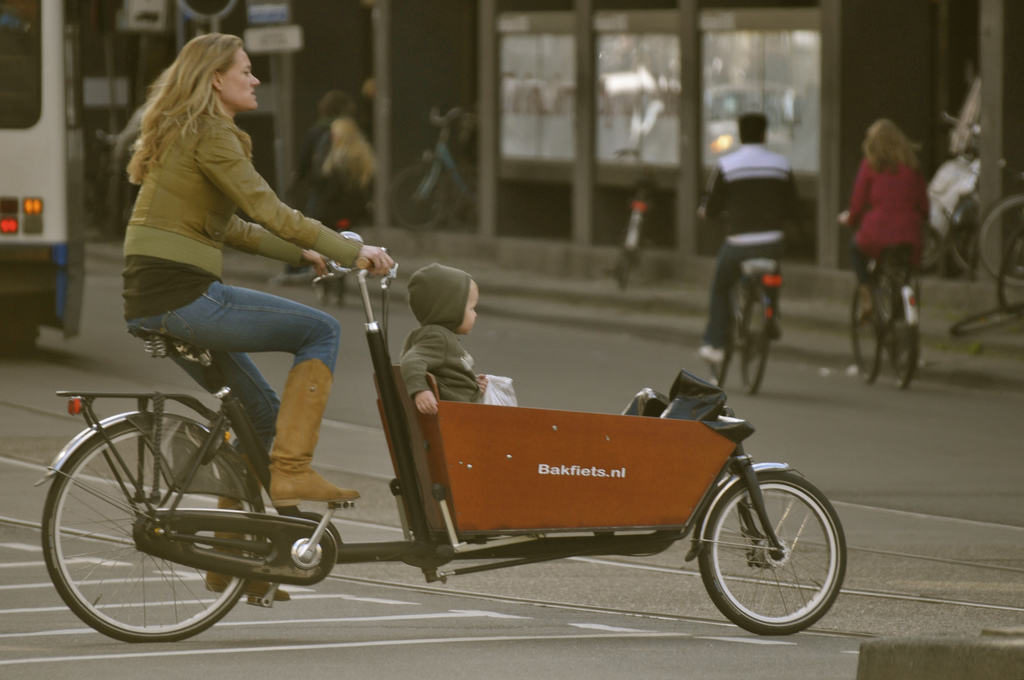
Microbreweries. Yes, it seems, even drinking locally brewed beer–instead of the Fordist, mass-produced swill of some global mega-corporation–contributes to gentrification. University of Toledo geographer Neil Reid, summarizes the academic research on this one, and concludes that microbreweries mostly tend to follow, rather than precede neighborhood change. Still he finds that in Cleveland and Denver, microbreweries showed up first, before property values escalated, so even though they represent local entrepreneurs creating sociable, community accessible “third places,” they’re going to get fingered for gentrification.
Neo-Liberalism: No two words are more conjoined in leftist academic urbanism than “neoliberal” and “gentrification.” There are too many fish in this barrel to justify choosing just one, but, for a flavor consider these titles: “Engagement, Gentrification, and the Neoliberal Hijacking of History,” “Gentrification in the Neoliberal World Order,” “Fighting gentrification in the neoliberal university,” and “Race, Space and Neoliberal Urbanism: Gentrification and Neighbourhood Change in Nashville.”
Opportunity Zones. The Jobs and Tax Cuts Act Congress passed in 2017 contains a new provision sheltering taxes on capital gains made in designated distressed areas. These opportunity zones are supposed to lead to additional investment that will help poor neighborhoods, but there are widespread concerns that the tax break will just fuel gentrification, by subsidizing the construction of market rate housing in distressed neighborhoods. Houston’s Kinder Institute says the opportunity zone program threatens to be “gentrification on steroids.”
Parks: Poor neighborhoods often suffer from a lack of local parks, but efforts to improve local parks often raise concerns about possibly raising property values. In Los Angeles, “a proposal to improve bike safety and pedestrian access to parks along the Los Angeles River was recently denounced as ‘a gentrification scam.'”
Q – R – S
LGBTQ: By moving in to low and moderate income communities, LGBTQ populations are sometimes labeled as the advance guard of gentrification, and paradoxically, some gayborhoods have themselves been gentrified by others. As Peter Moskowitz wrote at Vice, “When It Comes to Gentrification, LGBTQ People are Both Victim and Perpetrator; The role queer people—and especially white queers—play in the history of urban inequality is thorny, to say the least.”
Restaurants. In Chicago, according to local real estate website DNAInfo, protesters are treating a new restaurant as life-threatening: “Anti-Gentrifiers Say New Pilsen Restaurant Puts ‘Our Lives … In Danger.'”
Smart Phones. Governing magazine reports on a study that easy access to Yelp and other place-based reviews leads swarms of hipsters to quickly colonize and gentrify new spaces. They write: “That smartphone in your pocket just might be speeding up the gentrification of urban neighborhoods.”
Soccer. The Guardian looks at Orlando’s Major League Soccer franchise, which has built a new stadium in a city’s neighborhood, it worries, “the specter of gentrification only grows.” Soccer is turning its back on greenfield, suburban stadiums, because so much of the fan base consists of urban-dwelling young professionals.
T – U – V
Tech firms. In her now-classic 2014 essay, “How burrowing owls lead to vomiting anarchists,” Kim-Mai Cutler described how the demand for housing stimulated by the growth of the Bay Area tech industry ran head on to the highly regulated California housing market.
Urban Renewal: Many urban renewal efforts that consciously targeted “blighted” lower income neighborhoods, did a pretty good job bringing in higher income households, but often fell short in replacing the low and middle income housing that they demolished.
Vouchers. A couple of academic studies have come to the conclusion that school choice, including policies like No Child Left Behind’s option to leave failing schools, boosts housing prices and triggers gentrification. Planetizen reports that one review found, “The ability to opt out of the neighborhood school increased the likelihood that a mostly black or Hispanic neighborhood would see an influx of wealthier residents.”
W – X – Y – Z
Whole Foods. The opening of a Whole Foods Market at 125th and Lenox led one resident to call it “the final nail in black Harlem’s coffin,” noting the Whole Foods effect, “which is shown to drive up property values by as much as 40 percent.”
GenX: While millennials draw much of the attention for current gentrification, the “back to the city movement was propelled by the previous generation. An essay published by Slate argues ” . . among all age groups, the biggest shift toward high-density urban living has been among 35-to-39-year-olds—the younger slice of Gen X.”
You: As City Observatory’s Daniel Kay Hertz has written, “there’s basically no way not to be a gentrifier.” Your demand for living space in a city, regardless of what neighborhood you personally choose to live in, tends to create more pressure on housing markets, including in lower-income neighborhoods, especially if your city has a growing population but has not build more places for those people to live.
Zoning: Arguably, we’ve saved the best and most important cause for last. What prompts affluent people of means to choose to move into what have been low income neighborhoods. A huge and wildly underestimated cause is the fact that we’ve generally prohibited building more dense, affordable housing in the most desirable neighborhoods. Restrictive zoning in high income neighborhoods displaces this demand elsewhere, contributing to gentrification.
While there’s an entire alphabet of factors to blame, we urge our readers to focus on “Y” and “Z.” It is, individually and collectively our demand for urban spaces that’s the key factor fueling gentrification wherever it occurs. We simply need more great urban neighborhoods, and more housing in the great urban neighborhoods we’ve already built. And the chief obstacle to getting more such neighborhoods is that we’ve essentially made it illegal to build dense, new mixed use urban neighborhoods, and zoning (and a host of related restrictions) make it impossible or prohibitively costly to build more housing in these desirable places. When we realize that the challenges that manifest themselves as “gentrification” are problems of our making, and that the solutions are within our control, maybe we can move past a bitter and unproductive blame-game.


